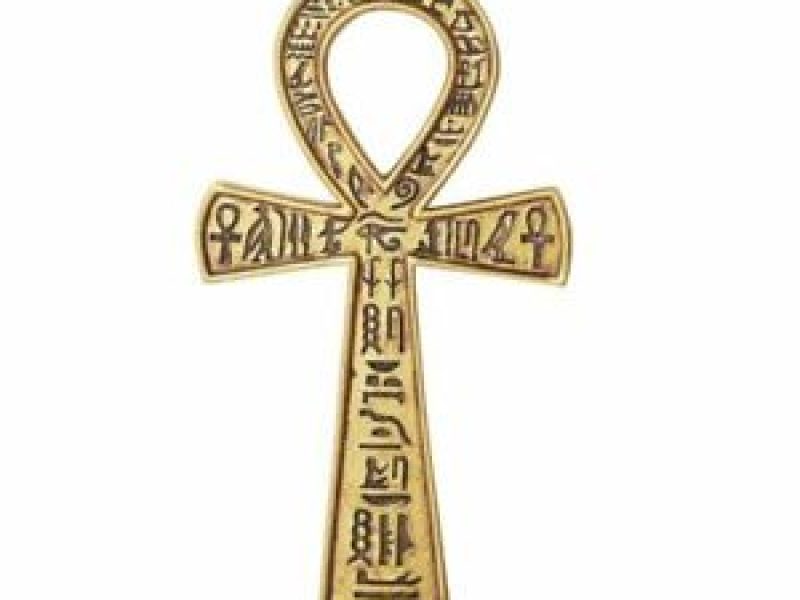1. The Ankh “Symbol of Life”
The Ankh is one of the most famous and used symbols of ancient Egypt and the world the Ankh showcases the concept of internal like and divine protection. It’s a cross with a looped top in a key-like shape, which has no beginning or end like the spirit of Ra, plus represents eternal life, the morning sun, purifying the life-giving power of water, clairvoyance, and the union of opposites like earth and heaven and male and female (Isis and Osiris). The Ankh Egyptian symbol appeared in the Early Dynastic Period (3150 -2613 BCE) and by the Old Kingdom (2613-2181 BC) the Ankh symbol became a powerful symbol of eternal life and was known as Neb-Ankh. The symbol is associated with “The Knot of the Goddess Isis” and her powerful cult (c. 3150 – c. 2613 BCE) as it represents the bond that holds all of life together. The Ankh symbol can be seen in the hands of mostly all the Pharaohs & the ancient Egyptian gods and goddesses. It’s also known as crux ansata by Coptic Christians which represents life and immortality. That symbol appears in paintings, on temple walls, and in tombs as it was the key to existence and used as an amulet to provide divine protection to the point where it was believed to be the key that can open the door to the afterlife. The Ankh can be viewed as a symbol of Joy and Balance between masculinity and feminity. The ancient Egyptian Symbol was referred to as the key of the Nile River which represents the eternal union of heaven and earth. The symbol of Ankh was often seen with the Djed and the Was Symbols. Note: The Ankh symbol is a symbol of life, protection, faith, energy, transformation, light, and fertility. The Ankh can also refer to the concepts and symbols of sexual union between the two opposite sexes and fertility due to its connection to the goddess Isis. The Ankh is the clearest and simple example of the ancient Egyptian understanding of immortality, future life, reproduction, and overall, the concept of the cycle of life.





Comment (0)